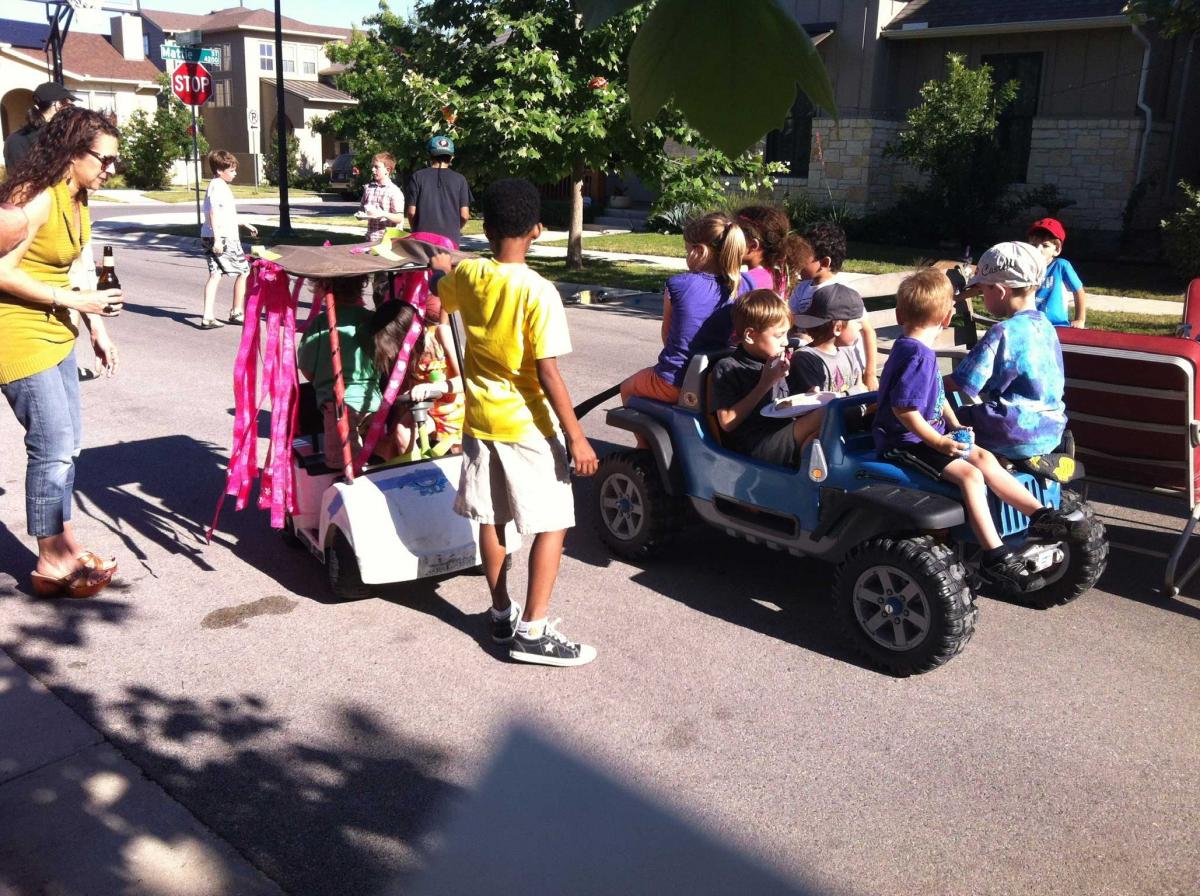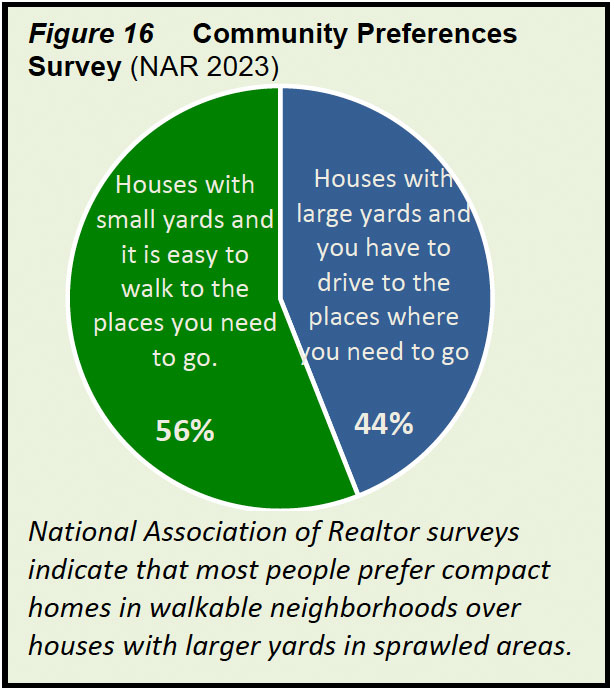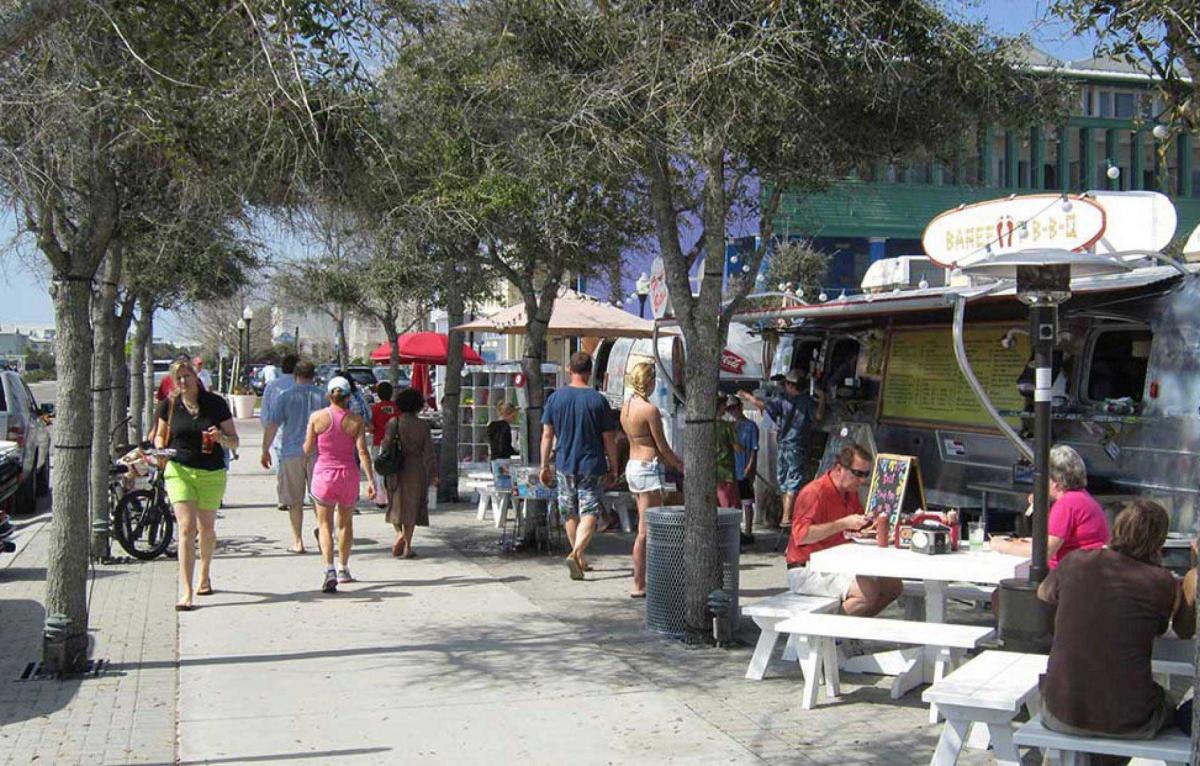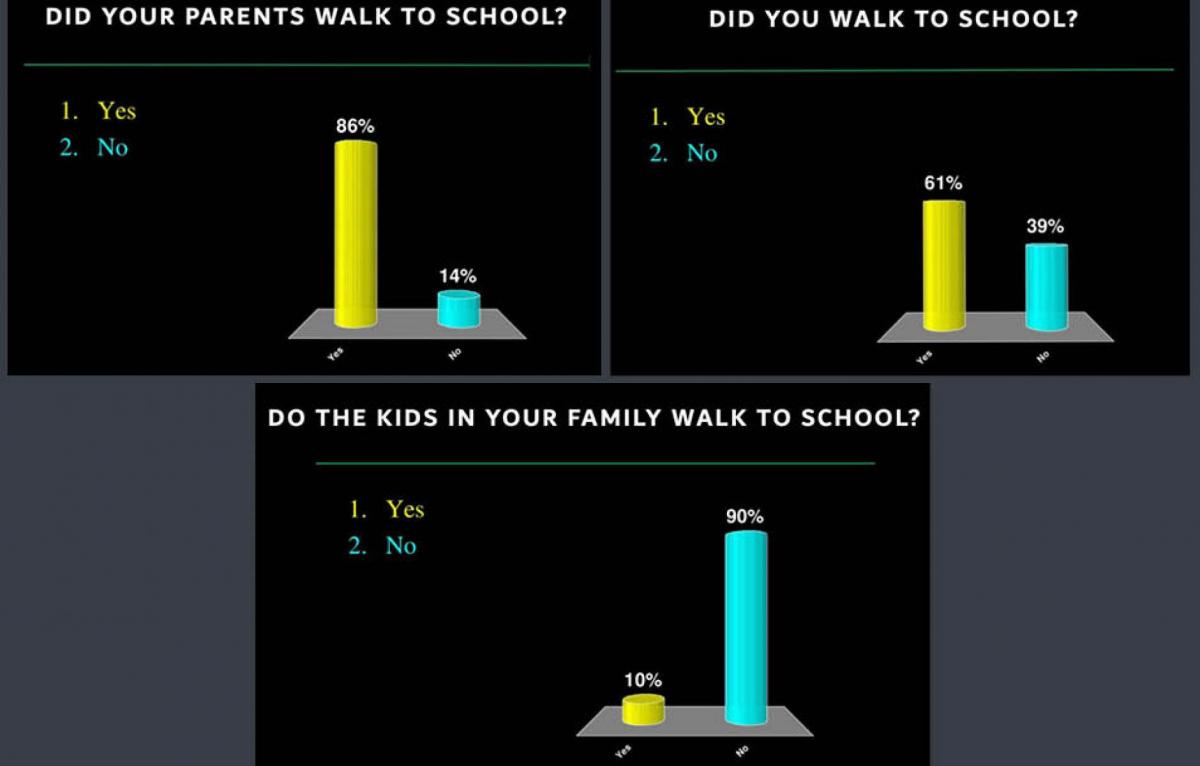
Make America walkable again
The Federalist, a conservative online magazine, recently published what can only be described as a political diatribe against New Urbanism. The authors, a Florida couple Jonathan and Paige Bronitsky, rant about new urbanists’ “fanatical hatred of the automobile” and about its adherents’ supposed desire to create a populace, through urban planning, that achieves political domination:
“The ‘planning and development approach,’ as the Congress for New Urbanism puts it, champions ‘walkability’ and ‘human-scale’ design but, in reality, is about control—limiting choices and creating a transient, economically dependent population that tilts politics permanently leftward.”
Embedded in that quote is a serious claim about New Urbanism and liberty. Before addressing that, I would say that the Bronitskys must be mind-readers. Despite thousands of pages on the CNU website covering countless urbanism-related topics, the authors don’t support their claim of car hatred—fanatical or otherwise—because that attitude doesn’t exist. New urbanists’ feelings toward their cars are similar to most Americans—what they don’t like is automobile over-dependence caused by bad planning.
The claim of a political endgame is silly: CNU is nonpartisan and includes members across the political spectrum. The Bronitskys cite two examples of New Urbanism—Seaside and Celebration, both in Florida. The precinct that includes Seaside went for Trump by 10 points in 2024, and the new urbanist core of Celebration, developed by Disney, picked Trump by 2.5 points. Celebration and Seaside are 30 and 40 years old, respectively. These towns must represent the slowest path to generate progressive voters in history. In truth, there is no such idea and never has been.
To give the Bronitskys their due, they make two serious charges. The first, mentioned above, is that New Urbanism is really about controlling people and taking away their freedom. Nothing could be further from the truth, yet I could see how others might arrive at that perspective, given misunderstandings or mischaracterizations like the authors’. Here’s how they describe it:
“New Urbanists dream of a ‘car-free’ America, where individuals are herded onto public transit or forced to walk and bike their way through life, regardless of their needs or preferences. DPZ CoDesign, founded in 1980 by [Andres] Duany and his wife Elizabeth Plater-Zyberk and the firm behind much of New Urbanism’s expansion, once gleefully tweeted, ‘We look forward to a ‘car-optional’ #Miami!’ ”
The worst tweet that the Bronitskys were able to find contradicts their point. Making cars “optional” is far from herding people onto public transit or forcing them to walk or bicycle. A “car-optional” city does not force anyone to do anything or reduce anyone’s freedom. It increases freedom by giving more options.

In a walkable neighborhood, you can always bike, and you can always drive—if you have a vehicle and a license. You likely have transit options as well. The walkable neighborhood could be in a small town, a pre-war suburb, or a small or medium-sized city, and driving in these places is likely just as convenient as in any suburb. Only in a dense urban city like Manhattan or San Francisco would driving be less convenient—but it is still possible.
I lived in a walkable neighborhood in a small city for most of my adult life. The freedom to go out the door, on foot or bicycle, and visit friends, visit parks, let your kids walk to school (which they did K-12), do light shopping, and go out on the town without needing a car is true luxury. But if we needed to leave the immediate area, driving was and is also easy. As a family of four, we put only 10,000 miles a year on the car, saving thousands of dollars, which we could spend in other ways. Households in drivable places spend about 24 percent of their income on transportation, while those in walkable neighborhoods average only 12 percent, according to research by Scott Bernstein of the Center for Neighborhood Technology (2015).
If New Urbanism increases the choices for how to get from point A to point B, it also radically boosts options of the route you take. A typical neighborhood of 160 acres, with 3-acre blocks, has more than 5,000 potential routes from one corner to the opposite corner without doubling back. The same-sized area with 11-acre blocks has 56 potential routes, almost a hundred times less. The above numbers are derived mathematically in two real places, Ithaca, New York, and Irvine, California. I am getting into the weeds here, but it feels like freedom to have virtually unlimited choices on how to stroll or bike around your neighborhood.
To be sure, there are tradeoffs in selecting a walkable versus a drivable community. The main one is that urban dwellers tend to have much smaller yards—if they inhabit single-family housing or missing middle residential types. The National Association of Realtors regularly asks buyers about that tradeoff in a nationwide survey: 56 percent of Americans prefer houses with small yards in neighborhoods where it is easy to walk to the places you need to go, compared to 44 percent who prefer houses with large yards where you to have to drive (2023). Since far fewer than 56 percent of US houses are located in walkable neighborhoods, most Americans don't get that choice.

That brings up the Bronitskys other serious criticism—that the New Urbanism is a boutique product only affordable to a wealthy elite. The two communities cited by the authors—Seaside and Celebration—are indeed expensive because they are in very high demand. Seaside and Celebration were prototypes of a radical idea in the late 20th Century: Building a new town modeled on traditional, historical towns, complete with a mixed-use downtown and civic buildings and a range of housing types. The alternatives at the time were vast, drivable communities of subdivisions. Seaside and Celebration did not start overpriced, but they became very expensive in resale because they offer a lifestyle in high demand and short supply. They are also aesthetically pleasing. (Seaside, I should note, is a resort. The market-based potential of nightly house rentals for three-quarters of the year drives the real estate values.)

If Seaside and Celebration are expensive prototypes of walkable, connected neighborhoods, how does New Urbanism do if it is widely applied? New urbanist zoning reform has been adopted in 26 percent of 2,300 municipalities surveyed nationwide—including all kinds and sizes of communities, in red and blue states. Separate studies of cities and towns with new urbanist “form-based codes” indicate they do not lead to “gentrification,” significantly change the racial makeup, or boost rents—while they do offer economic and social benefits.
Those findings are borne out in Buffalo, New York, which adopted the Green Code in January of 2017. The Green Code is a “form-based code” that applies new urbanist principles to promote the redevelopment of mixed-use, walkable neighborhoods. The city immediately saw new housing that had long been missing, especially the reuse of historic, vacant, or underutilized buildings. By the 2020 census, Buffalo's population had gained 6.5 percent for the decade, the first increase since the 1940s, while retaining affordable housing costs. The average monthly rent in Buffalo is now $1,438, significantly lower than the national average of $1,748. The average home price in Buffalo is $220,000, far less than the US average of $419,200.

If you live in Buffalo, you likely have options for how to get around. Owning a car and driving in Buffalo is easy, but cars are optional for many trips in many city neighborhoods. That reduces costs for Buffalo residents. Contrary to the Bronitskys’ claim that New Urbanism is only for the elite, Buffalo is a working-class city where New Urbanism works well.
New Urbanism promotes a return to the kind of walkable neighborhoods common in cities and towns across America prior to 1950. New HHS Secretary Robert Kennedy Jr. has highlighted real problems with America's health, including childhood obesity rates that are near the highest in the world and skyrocketing chronic disease among the entire population. Many studies link declining health to the built environment, which radically changed over three generations.
Virtually all children walked to and from school in the mid-20th Century, and now they are nearly all being driven. When I was a child, I spent my free time outdoors. Now, children spend their free time indoors, in front of screens. A built environment that keeps children hostage to adult chauffeurs is part of that unhealthy shift.

Planners and government roads created an unhealthy built environment by artificially separating and creating great distance between community uses, and then funding high-speed roads through those uses. We are living with that legacy of sprawl today. New urbanists promote a return to common-sense planning of healthier communities.
New urbanists have no plan or desire, as The Federalist headline states, “to bulldoze the American dream”—and we don't have that kind of power even if we did. That is a panic-inducing myth that has never happened, and never will, and our vision includes suburbs and single-family houses. But we do challenge the idea that suburban sprawl is the healthiest way for government to invest in and plan communities. The radical hegemony of government-sponsored sprawl over the last 70 years has decreased the freedom and health of Americans. New urbanists want to make America walkable, and healthier, again.




